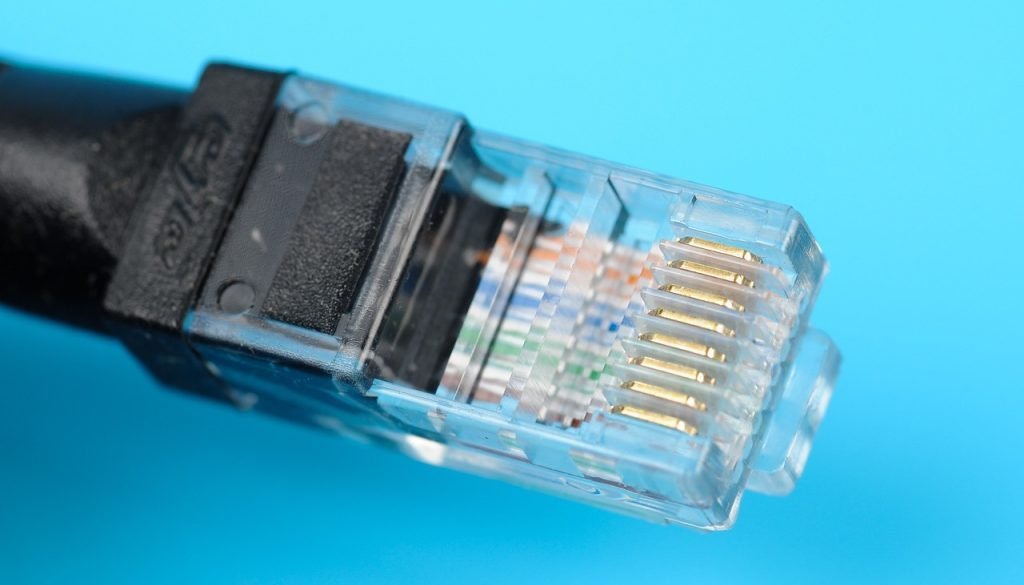Ethernet vs Internet: Understanding the Differences
In the world of networking, two terms that often come up are Ethernet and Internet. While both enable connectivity between users and devices, they serve different purposes and operate on different scales. In this article, we will dive deep into the differences between Ethernet and Internet, exploring their definitions, functions, use cases, and more. Let’s explore Ethernet Vs Internet.
1. Introduction to Ethernet
What is Ethernet?
Ethernet is a technology that enables the connection of devices in a Local Area Network (LAN). It provides a standard way to link computers, machines, and switches within a specific geographic region. The communication in Ethernet is facilitated through a wired connection using Ethernet cables.
Read more about LAN: LAN Local Area Network: Advantages and Disadvantages in 2023
Evolution of Ethernet
Ethernet was developed in the mid-1970s by Xerox, Intel, and DEC as a LAN standard. It revolutionized the way computers within a network communicated with each other. The first official Ethernet standard, approved by the IEEE in 1983, had a transmission speed of 10 Mbps. Since then, Ethernet has evolved significantly, with modern standards supporting speeds up to 10 Gbps.

2. Understanding the Internet
What is the Internet?
The Internet is a global network of interconnected computer networks that span the entire globe. It serves as a digital infrastructure that allows devices from different networks to communicate with each other using the Transmission Control Protocol/Internet Protocol (TCP/IP). The Internet facilitates the exchange of information, services like email and file sharing, and access to the World Wide Web.
For more information about TCP/IP: Differences between OSI and TCP/IP Models
The Growth of the Internet
The Internet’s origins can be traced back to ARPANET, a predecessor network created in the 1960s. Initially, only computers within the same network could communicate with each other. However, the development of TCP/IP in the early 1980s enabled computers on different networks to connect and communicate, leading to the expansion of the Internet as we know it today.
3. Ethernet vs Internet: Key Differences
Size and Connectivity
One of the primary differences between Ethernet and the Internet is their scale. Ethernet operates within a local area network (LAN), connecting devices in a limited geographic area. On the other hand, the Internet is a vast network that spans the globe, connecting thousands of networks and allowing communication between devices worldwide.
Reliability and Security
Ethernet, being a wired technology, offers higher reliability and security compared to the Internet. In Ethernet, devices are physically connected to the network, reducing the risk of signal interference and providing a more stable connection. In contrast, the Internet allows open access, making it susceptible to security threats from external devices.
Use Cases
Ethernet is commonly used in environments that require secure and high-speed connectivity, such as universities, offices, and hospitals. It provides reliable communication within a LAN and also serves as a means to connect devices to the Internet. The Internet, on the other hand, offers a wide range of use cases, including email communication, file transfer, web browsing, and infrastructure support for the Internet of Things (IoT).
For more information about IoT: Internet of Things (IoT): Empowering Your World with the Unstoppable Force
4. How to Access the Internet
Modem and Router
To access the Internet, users require an appliance called a modem, which enables connectivity from Internet Service Providers (ISPs) like AT&T or Verizon. A router is another essential component that allows multiple devices on a network to use the Internet connection simultaneously. Some devices combine the functionality of both modem and router.

For more information about Router: How to Set Up and Configure Your Router: A Comprehensive Guide
Wired and Wireless Connections
Devices can connect to a router using either wired or wireless connections. Wired methods include Ethernet cables and fiber optics, providing reliable and high-speed connectivity. Wireless methods, such as Wi-Fi and cellular networks (3G, 4G), offer the convenience of mobility but may have lower speeds and reliability compared to wired connections.
5. The Internet of Things (IoT)
IoT Overview
The Internet of Things (IoT) refers to the network of billions of devices connected to the Internet. These devices, often referred to as “smart devices,” can autonomously communicate with each other without human intervention. IoT has simplified processes for consumers and businesses, allowing control and automation of various tasks.
Power over Ethernet (PoE)
Power over Ethernet (PoE) is an Ethernet technology that adds electrical power to network cables. This eliminates the need for separate power cables, reducing clutter and simplifying installation. PoE is commonly used to power wireless IoT devices, providing both data connectivity and power over a single Ethernet cable.
6. Conclusion
In conclusion, Ethernet and the Internet are two distinct networking technologies with different scales and purposes. Ethernet operates within a local area network, providing reliable and secure connectivity for devices in a specific region. The Internet, on the other hand, is a global network that connects thousands of networks worldwide, enabling communication, information exchange, and a wide range of services. Understanding the differences between Ethernet and the Internet is essential for navigating the world of networking and choosing the right technology for specific use cases.

Reference
- What’s the difference between internet and Ethernet?
- Ethernet vs Internet | Top 5 Differences you Should Know
- Ethernet vs. Internet: What’s the Difference? (Explained)
FAQs: Ethernet vs Internet
Q1: What is Ethernet? Ethernet is a local area network (LAN) technology that enables devices within a specific physical area, like a home or office, to connect and communicate with each other. It involves the use of cables, such as twisted pair or fiber optic, to transmit data between devices like computers, printers, and routers.
Q2: What is the Internet? The Internet is a global network that connects millions of computers and other devices worldwide. It allows these devices to communicate and share information through a variety of technologies, including Ethernet. The Internet extends beyond the local area network (LAN) and encompasses a vast, interconnected network of networks.

Q3: Is Ethernet the same as the Internet? No, they are not the same. Ethernet is a technology used for local network connections, facilitating communication within a limited geographic area. On the other hand, the Internet is a global network that interconnects multiple local and wide area networks, enabling worldwide communication and access to various services.
Q4: How are Ethernet and the Internet related? Ethernet is often used as a technology to connect devices within a local network to the Internet. For example, a router in a home or office may use Ethernet to establish local connections, and then it connects to the Internet, allowing devices on the local network to access online resources.
Q5: Can I access the Internet without Ethernet? Yes, you can. While Ethernet is a common technology used for local network connections, it’s not the only option. Wi-Fi and cellular data are examples of wireless technologies that allow devices to connect to the Internet without using physical Ethernet cables.
Q6: Do I need Ethernet for a Wi-Fi connection? No, Ethernet is not required for a Wi-Fi connection. Wi-Fi is a wireless technology that allows devices to connect to a local network and, subsequently, to the Internet without the need for physical cables. However, Ethernet can be used to provide a more stable and potentially faster connection in some cases.
Q7: Can I have the Internet without Ethernet cables? Yes, you can have Internet access without using Ethernet cables. In addition to Wi-Fi, technologies such as fiber optics, DSL, cable modems, and cellular networks provide alternative means for connecting to the Internet without relying on physical Ethernet connections.
Q8: Which is faster, Ethernet or the Internet? Ethernet itself is generally faster than the Internet connection speed. Ethernet speeds are typically measured in gigabits per second (Gbps), while Internet speeds are often measured in megabits per second (Mbps) or gigabits per second. The speed of your Internet connection depends on your service provider and the technology they use.
Q9: Can I use Ethernet and Wi-Fi together? Yes, you can use Ethernet and Wi-Fi simultaneously. Many devices, such as laptops and smartphones, support both Ethernet and Wi-Fi connections. You can choose which connection to use based on your preferences or specific requirements.
Q10: Do I need Ethernet for online gaming? Ethernet is often recommended for online gaming. While Wi-Fi can be used, Ethernet connections generally offer lower latency and a more stable connection, which is crucial for online gaming where a delay in data transmission (lag) can affect gameplay.
Multiple Choice Questions (MCQs) with Answers: Ethernet vs Internet
Q1: What is Ethernet primarily used for?
- a) Global internet connections
- b) Local area network (LAN) connections
- c) Wireless communication
- d) Satellite communication
Answer: b) Local area network (LAN) connections
Q2: What is the Internet?
- a) A local network technology
- b) A global network connecting millions of devices
- c) A type of Ethernet cable
- d) An offline communication system
Answer: b) A global network connecting millions of devices
Q3: Can you access the Internet without using Ethernet cables?
- a) No, Ethernet is the only way to connect to the Internet
- b) Yes, there are alternative methods like Wi-Fi and cellular networks
- c) Only in certain countries
- d) Only with a satellite connection
Answer: b) Yes, there are alternative methods like Wi-Fi and cellular networks
Q4: Which technology is commonly used for wireless local connections?
- a) Ethernet
- b) Fiber optic
- c) Wi-Fi
- d) DSL
Answer: c) Wi-Fi
Q5: Is Ethernet faster than the Internet?
- a) Yes, Ethernet is always faster
- b) No, the Internet is always faster
- c) It depends on the service provider
- d) Both have the same speed
Answer: c) It depends on the service provider
Q6: What technology provides a stable and potentially faster connection for online gaming?
- a) Dial-up
- b) Wi-Fi
- c) Ethernet
- d) Satellite
Answer: c) Ethernet
Q7: Can devices support both Ethernet and Wi-Fi connections simultaneously?
- a) No, devices can only support one type of connection
- b) Yes, devices can support both Ethernet and Wi-Fi
- c) Only computers can support multiple connections
- d) Only smartphones can support multiple connections
Answer: b) Yes, devices can support both Ethernet and Wi-Fi
Q8: What is measured in gigabits per second (Gbps)?
- a) Internet speed
- b) Ethernet speed
- c) Wi-Fi speed
- d) Cellular speed
Answer: b) Ethernet speed
Q9: Which technology is often used for connecting devices within a specific physical area?
- a) Internet
- b) Satellite communication
- c) Ethernet
- d) Fiber optic
Answer: c) Ethernet
Q10: Can you have Internet access without using physical Ethernet cables or Wi-Fi?
- a) No, both are required for Internet access
- b) Yes, there are alternative technologies like DSL and cable modems
- c) Only in rural areas
- d) Only in urban areas
Answer: b) Yes, there are alternative technologies like DSL and cable modems



